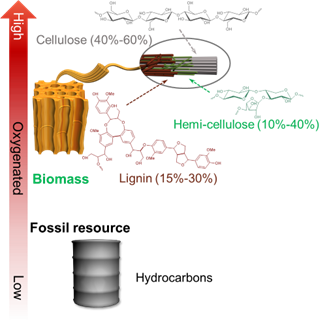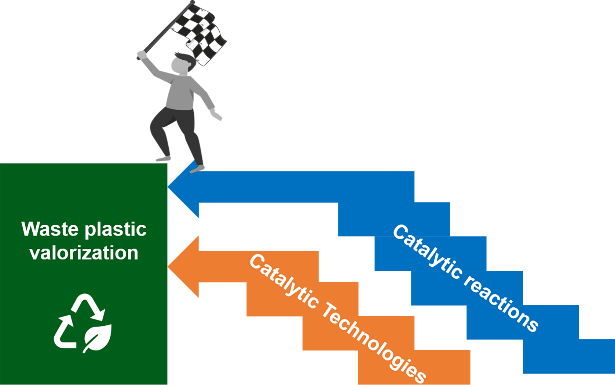Research Program
Electrocatalytic and photoelectrocatalytic methods for material synthesis driven by renewable energy sources (e.g., solar energy, wind, hydro) are sustainable strategies that do not rely on fossil fuels, which can address the environmental problems associated with global warming and alleviate the energy crisis. Moreover, coupling appropriate anodic reactions with hydrogen evolution reaction (HER) affords hydrogen (H2) production with decreased overpotential thus with reduced energy consumption.
We are interested in the development of novel electrocatalytic and photoelectrocatalytic reactions, with emphasis on biomass conversion, plastic upcycling, and organic synthesis.

1. Biomass Conversion
Biomass is the most abundant renewable carbon source in Earth with great potential as feedstock for chemicals and fuels productions. Development of catalytic transformations powered by renewable energy and operated under mild conditions can greatly decrease the energy consumption compared with conventional thermal catalytic reactions that are operated at high temperature and pressure. We are working on the development of electrocatalytic and photoelectrocatalytic methods for biomass conversion, including converting cellulose, hemicellulose, lignin and glycerol to valuable organic compounds.

2. Plastic upcycling
Plastic waste triggers a series of concerns because of its disruptive impact on the environment and ecosystem. From the point of view of catalysis, however, end-of-life plastics can be seen as an untapped feedstock for the preparation of value-added products. This is usually called “upcycling”. We are developing innovative methods for conversing the wastes to wealth in a sustainable fashion.

3. Organic synthesis
Organic synthesis of bulk and fine chemicals with industrial importance represent the fundament of modern society and economic. Development of novel strategy in a green pathway can circumvent the largely dependency on fossil fuel and harsh reaction condition (elevated temperature and pressure) applied in conventional thermal catalysis. In particular, we are devoting our efforts to synthesize chemicals with highly market-demanded or high value.
